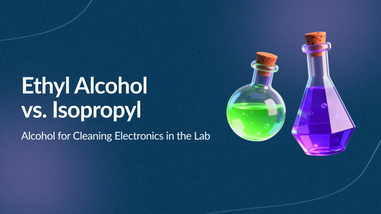- No products in the cart.
Acids are fundamental compounds in chemistry, playing crucial roles in various reactions and processes. Understanding their nomenclature is essential for any chemistry enthusiast or student. While the names of acids may seem complex and daunting at first, breaking down the nomenclature process into simple steps can make it more approachable. In this blog post, we'll demystify acid nomenclature and provide you with the simple steps needed to name acids correctly.
Understanding Acid Nomenclature
Acids are classified into two main categories: binary acids and oxyacids. Binary acids contain hydrogen and one other element, while oxyacids contain hydrogen, oxygen, and another element. The naming conventions for these two types of acids differ slightly but follow a systematic approach.
Naming Binary Acids
Binary acids are named using the prefix "hydro-" followed by the root of the non-metallic element, and the suffix "-ic." Here are the steps to name binary acids correctly:
-
Identify the Non-Metallic Element: Determine the non-metallic element present in the binary acid. This element will serve as the root of the acid name.
-
Add the Prefix "Hydro-": Precede the root of the non-metallic element with the prefix "hydro-."
-
Append the Suffix "-ic": Add the suffix "-ic" to the root of the non-metallic element.
-
Include the Word "Acid": Complete the name by adding the word "acid" at the end.
For example, HCl is a binary acid composed of hydrogen and chlorine. Following the steps above, we name it "hydrochloric acid."
Naming Oxyacids
Oxyacids are named based on the polyatomic ion they contain. The suffix of the acid name changes depending on the ending of the polyatomic ion. Here's how to name oxyacids correctly:
-
Identify the Polyatomic Ion: Determine the polyatomic ion present in the oxyacid. Polyatomic ions are groups of atoms that carry a net electrical charge.
-
Determine the Suffix: The suffix of the oxyacid name depends on the ending of the polyatomic ion.
- If the polyatomic ion ends in "-ate," replace the suffix with "-ic acid."
- If the polyatomic ion ends in "-ite," replace the suffix with "-ous acid."
-
Include the Word "Acid": Complete the name by adding the word "acid" at the end.
For example, H2SO4 is an oxyacid containing the sulfate (SO4^2-) ion. Since sulfate ends in "-ate," we name the acid "sulfuric acid."
Examples of Acid Nomenclature
Let's apply the steps above to name a few acids:
- HClO3 contains the chlorate (ClO3^-) ion. Following the naming rules for oxyacids, we name it "chloric acid."
- H2S is a binary acid composed of hydrogen and sulfur. Following the naming rules for binary acids, we name it "hydrosulfuric acid."
- HNO2 contains the nitrite (NO2^-) ion. Since nitrite ends in "-ite," we name the acid "nitrous acid."
Conclusion
Understanding acid nomenclature is an essential skill for any chemistry student or enthusiast. By following simple steps and guidelines, you can confidently name both binary and oxyacids. Whether you're conducting experiments in a laboratory or studying chemical reactions, mastering acid nomenclature opens doors to a deeper understanding of chemistry. So, next time you encounter an acid, remember these simple steps to name it correctly and impress your peers with your chemistry knowledge!
For over 40 years, Lab Pro Inc. is your steadfast source for acids, lab chemicals, premium cleanroom wipes, hand tools, lab equipment, and PPE apparel. Trusted by aerospace industries, medical device companies, and laboratories globally, we epitomize exceptional quality in every product. Experience the convenience of next day service in California. Contact us online or at 888-452-2776 to explore solutions tailor-made for the laboratory industry. Elevate your experiments with Lab Pro Inc. – your partner in precision and excellence.












































